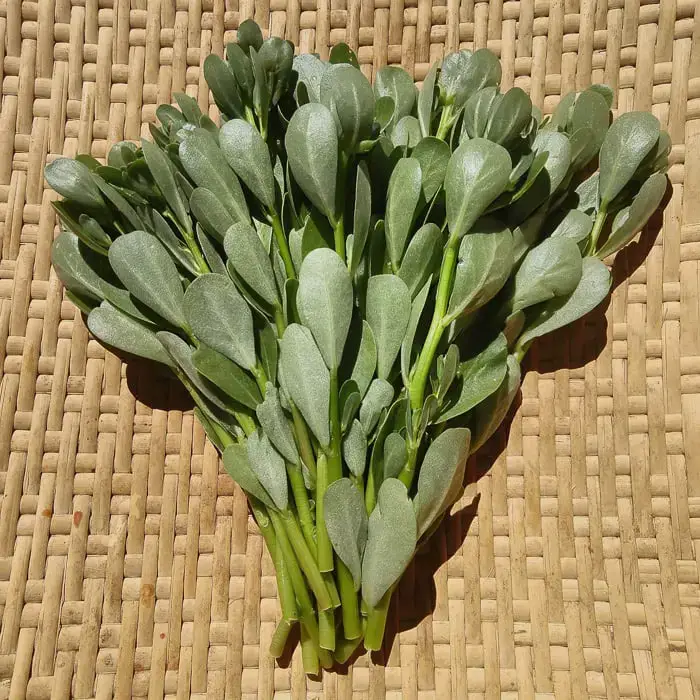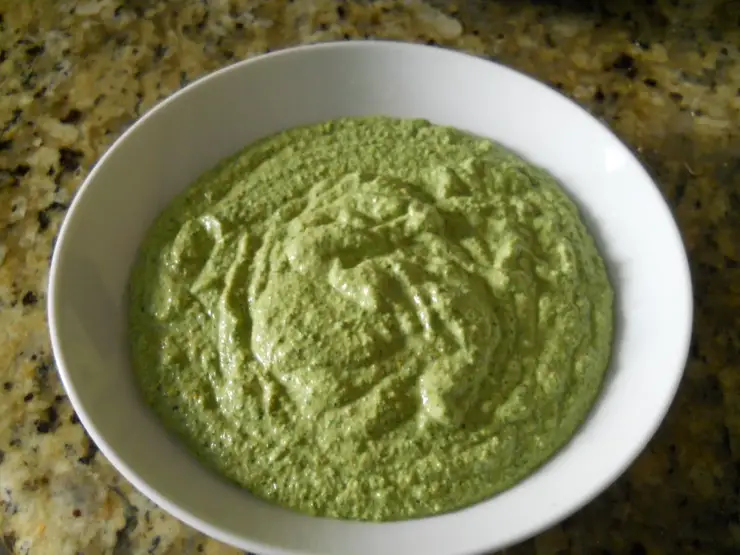Purslane (Verdolaga) is no longer a garden menace but a valuable gem! This remarkable plant is reclaiming its place in farmer’s markets and prestigious restaurants, offering both health benefits and culinary delight.
Known by various names such as hogweed and pigweed, Purslane is a weed you’ll want to embrace. Regarded as a superfood, it holds a special place in the heart of even Mahatma Gandhi and is now experiencing a resurgence.

This resilient plant emerges from pavement cracks, infiltrates gardens, and is hailed as a “miracle plant” by Dr. Artemis Simopoulos, the president of the Centre for Genetics, Nutrition, and Health. During her tenure at the National Institutes of Health, Dr. Simopoulos discovered that Purslane contains the highest levels of Omega-3 fatty acids among all green plants.
Its teardrop-shaped succulent leaves are abundant in antioxidants, vitamins, and minerals, making it a nutritious powerhouse. But that’s not all—these leaves also offer a refreshing and tangy lemon flavor with a hint of peppery kick, as described by Sergio Vitale, the chef-owner of Aldo’s Ristorante Italiano in Chicago, who grew up enjoying Purslane in southern Italy.

Although early Americans, including Martha Washington, relished Purslane both raw and pickled, its usage dwindled in the early 1900s. Fortunately, in recent years, farmers, foragers, and innovative chefs have rekindled their interest in this beneficial weed.
When preparing wild Purslane, it’s crucial to wash the plant meticulously to eliminate any pesticide residue. With its tart and slightly salty taste, Purslane makes an excellent addition to salads and various dishes.
Additionally, here’s a simple recipe to try: Purslane and Basil Pesto.

Ingredients:
2 cups young Purslane leaves and stems, rinsed and roughly chopped
45g basil leaves, rinsed
1 clove garlic
45g toasted almonds
Juice from half a lemon
50ml olive oil
Salt and pepper to taste
Instructions:
-
Combine Purslane, basil, garlic, almonds, and lemon juice in a food processor.
Pulse until well combined.
While the processor is running, slowly stream in olive oil until the mixture emulsifies.
Season with salt and pepper to taste.
Enjoy this flavorful pesto on a toasted sandwich, roasted vegetables, meat, or tossed with pasta.
Now, let’s explore the nutritional benefits of Purslane:

-
Omega-3 Fatty Acids: Purslane stands out as an exceptional plant-based source of these essential fatty acids, crucial for brain and heart health, especially for vegans.
Antioxidants: Loaded with antioxidants like glutathione, Purslane helps protect cells, combat damage, and slow down the aging process.
Minerals: With notable amounts of calcium, magnesium, potassium, iron, phosphorus, manganese, copper, folate, and selenium, Purslane fills the gaps in the Standard American Diet and supports overall well-being.
Vitamin C: A significant source of this immune-boosting vitamin, which aids in maintaining a strong and resilient immune system.
Beta-carotene: Abundant in Purslane, beta-carotene serves as a precursor to vitamin A, addressing the deficiency commonly found in many individuals.
Melatonin: Unlike most plants, Purslane contains melatonin, a hormone crucial for regulating sleep patterns, making it a valuable natural source.
Cholesterol Reduction: Thanks to betalain, an antioxidant present in Purslane, it helps prevent cholesterol damage to blood vesselsand has a positive impact on LDL cholesterol levels.
Tryptophan: Purslane contains tryptophan, an important amino acid that aids in mood regulation and combats depression.
Embrace the wonders of Purslane and experience its medicinal and culinary benefits. From its Omega-3 richness to its melatonin content, this versatile plant has much to offer for your well-being and taste buds alike.
News
JJ Redick reacts to Luka Doncic trade for Anthony Davis
In one of the most jaw-dropping moves of the season, the NBA landscape was rocked by the blockbuster trade involving Luka Dončić and Anthony Davis—a swap that has sent ripples of excitement, disbelief, and heated discussion through the league. Among…
Anthony Davis FULL reaction to trade to Mavericks for Luka Doncic
In a blockbuster move that sent shockwaves through the NBA and left fans reeling, Anthony Davis has been traded to the Dallas Mavericks in exchange for Luka Dončić. In the immediate aftermath of the news, Davis took to the media…
Shaq reacts to Dallas Mavericks wanting Kevin Durant after Luka-AD trade 👀
In the constantly shifting world of the NBA, trade rumors and blockbuster moves are a regular part of the season’s drama. The latest twist has fans buzzing: the Dallas Mavericks have reportedly set their sights on acquiring Kevin Durant in…
Donovan Mitchell FILTHY poster dunk on Kristaps Porzingis 😳
In a game filled with high-intensity moments and jaw-dropping highlights, one play in particular has left fans and analysts buzzing about Donovan Mitchell’s latest display of athleticism. Early in the contest, with the atmosphere already charged by an evenly matched…
Joel Embiid hits go-ahead bucket vs Mavs then chats with Anthony Davis after game
In one of the most thrilling contests of the season, Joel Embiid delivered a clutch performance against the Dallas Mavericks, punctuating the game with a go-ahead bucket that sent the home crowd into a frenzy. The atmosphere in the arena…
D’Angelo Russell game winner as Nets hit two 3’s in 3 seconds to win vs Rockets 😱
In one of the most electrifying moments in recent NBA history, D’Angelo Russell delivered an unforgettable game-winner that left fans and commentators in complete awe. With the Brooklyn Nets locked in a tense battle against the Houston Rockets, the outcome…
End of content
No more pages to load











